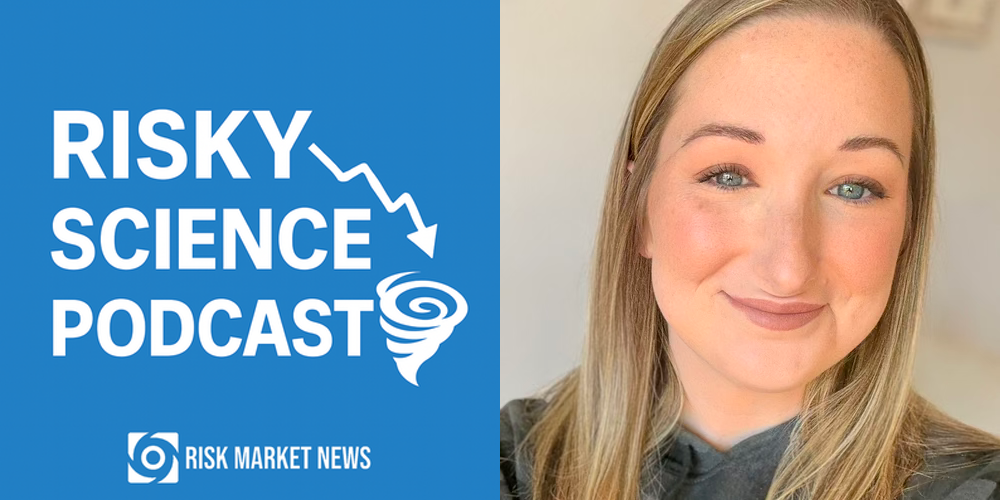Join next week's discussion...

- Apollo To Deploy Insurance-Funded Private Credit War Chest to "Reindustrialize" Europe
Apollo's private credit strategy relies heavily on its retirement servicesl, which uses insurance and reinsurance liabilities to fund private credit origination. - Arch Execs Pitch Cycle Management as Property Cat Market Cools
Arch's leaders add the long-term compensation strategy will adjust to property cat market softening. - North Carolina Pushes for $40M in Hazard Model Funding
State officials want to develop advanced landslide hazard mapping and flood modeling capabilities following Hurricane Helene. - California Lawmakers Pass Public Wildfire Catastrophe Model Legislation
SB 429 heads to Governor's desk and would create the nation's first public wildfire risk assessment tool.

Prediction Markets Signal New Era for Insurance Risk Transfer
Prediction markets like Kalshi, Polymarket and Predictit have already upended the sports betting and election forecasting landscape. Now they are setting their sights on insurance, reinsurance and physical risk hedging industries have been the exclusive playground of institutions.
Susquehanna International Group's Jeff Yass spelled out the concept in Forbes this week, saying:
Prediction markets can allow parties to more efficiently share risk on a parametric basis. Hurricane risk for Florida homeowners is an example. Rather than buying annual insurance policies, homeowners could hedge potential property damage risk as hurricanes approach by purchasing a “Yes” contract that winds will exceed a specified speed in their town, informed by up-to-the-minute meteorological data.
The Risky Science Podcast spoke with Shannon Magiera, operations specialist at Kalshi, about how real-time weather markets are creating alternative pathways for risk distribution that bypass London and Munich entirely.
Weather prediction markets now handle trades reaching tens of thousands of dollars, with institutional participation growing rapidly as firms explore parametric hedging outside traditional insurance structures.
Parametric Risk Transfer at Scale
Weather prediction markets operate on granular, parametric triggers that mirror what insurers have long sought: objective, tamper-proof settlement mechanisms based on measurable weather events. Daily high temperatures, monthly tornado counts, hurricane wind speeds, and seasonal climate indices all trade with NOAA data as the final arbiter.
This creates unprecedented transparency in catastrophe risk pricing:
- Real-time price discovery – Markets continuously reflect collective wisdom about weather probabilities, unlike annual insurance renewals.
- Institutional adoption – Insurance companies and financial firms are exploring these platforms as alternatives to traditional reinsurance structures.
The implications are profound. Where insurers traditionally relied on catastrophe models and broker negotiations, prediction markets offer instant, liquid pricing for weather-related exposures.
Disrupting Traditional Risk Distribution
Rather than purchasing annual policies with complex terms and claims processes, risk transfer programs run by Kalshi becomes granular and immediate.
Consider hurricane risk: instead of paying annual premiums to cover potential damage, property owners could hedge specific wind speed thresholds as storms approach. Magiera, who faces a $10,000 hurricane deductible on the Gulf Coast, sees this as complementary to, or potentially replacing, traditional coverage.
"You're able to build that into your risk assessment to make sure that you're covered," she explained. "It doesn't necessarily have to be a replacement for insurance as much as it can be an additional tool.
Challenges to Traditional Models
Prediction markets sidestep many insurance industry friction points. Settlement relies on some of the same authoritative government sources—NOAA, National Weather Service data—used by many insurance-linked securities eliminating claims disputes and adjuster delays. Market manipulation concerns limit coverage to natural phenomena, avoiding moral hazard issues that plague traditional policies.
However, liquidity remains a constraint. While tens of thousands of dollars flow through individual weather trades, this pales beside catastrophe bond issuances or reinsurance treaty limits. The question becomes whether prediction market liquidity can scale to institutional needs.
The Democratization Challenge
Perhaps most disruptive is how prediction markets flatten traditional modeling advantages.
"Even on an institutional level, there's nothing really that they have that an average user wouldn't also have access to," Magiera observed. This democratization of weather risk assessment could pressure traditional insurance profit margins while creating new competitive dynamics.
As climate risks intensify and capital seeks efficiency, platforms like Kalshi represent potential alternatives to century-old insurance structures. Whether prediction markets complement or compete with traditional coverage may determine the industry's evolution.
🎙️ Get the full episode of the podcast on your favorite player here





